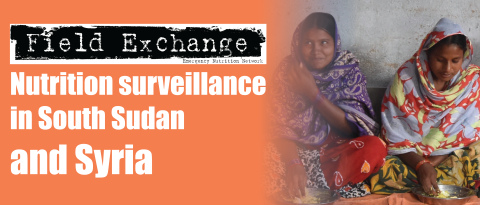Impact on child acute malnutrition of integrating small-quantity lipid-based nutrient supplements into community-level screening for acute malnutrition in Mali
Research snapshot1
The impact of community-based management of acute malnutrition (CMAM) is often limited by low coverage of screening for acute malnutrition. A two-arm cluster-randomised controlled trial in 48 health centre catchment areas in the Bla and San health districts in Mali aimed to test the impact of distributing small-quantity, lipid-based nutrient supplements (SQ-LNSs) at monthly screenings held by community health volunteers (CHVs). Screening sessions included behaviour change communication on nutrition, health and hygiene practices (both study arms), and SQ-LNSs (one study arm). Impact was assessed on acute malnutrition screening and treatment coverage and on acute malnutrition incidence and prevalence. A repeated cross-sectional study (n = 2,300) with baseline and endline surveys was used to examine impacts on acute malnutrition screening and treatment coverage and prevalence. A longitudinal study of children enrolled at six months of age (n =1,132) and followed monthly for 18 months was used to assess impact on acute malnutrition screening and treatment coverage and incidence.
The intervention significantly increased acute malnutrition screening coverage (cross-sectional study: +40 percentage points [pp], 95% confidence interval [CI]: 32, 49, p < 0.001; longitudinal study: +28 pp, 95% CI: 23, 33, p < 0.001). No impact on treatment coverage or acute malnutrition prevalence was found. Children in the intervention arm, however, were 29% (95% CI: 8, 46; p = 0.017) less likely to develop a first acute malnutrition episode (incidence) and, compared to children in comparison arm, their overall risk of acute malnutrition (longitudinal prevalence) was 30% (95% CI: 12, 44; p = 0.002) lower. The intervention lowered CMAM enrolment by 10 pp (95% CI: 1.9, 18; p = 0.016), an unintended negative impact likely due to CHVs handing out preventive SQ-LNSs to caregivers of acute malnutrition children instead of referring them to the CMAM programme. Incorporating SQ-LNSs into monthly community-level acute malnutrition screenings and behaviour change communication sessions was highly effective at improving screening coverage and reducing acute malnutrition incidence, but it did not improve acute malnutrition prevalence or treatment coverage. Further research is needed on remaining barriers to CMAM uptake.
Endnotes
1Huybregts L, Le Port A, Becquey E, Zongrone A, Barba FM, Rawat R, et al. (2019) Impact on child acute malnutrition of integrating small-quantity lipid-based nutrient supplements into community-level screening for acute malnutrition: A cluster-randomized controlled trial in Mali. PLoS Med 16(8): e1002892. https://doi.org/10.1371/journal.pmed.1002892


